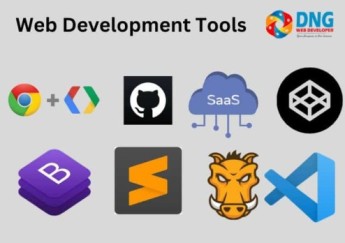Front-End Development refers to the part of web development that deals with the visual aspects of a website or web application.Key Components of Front-End Development It is the interface that users interact with directly, encompassing everything from the layout and design to the behavior of the page. Front-end developers use various technologies, languages, and frameworks to create an engaging and functional user experience.
Key Components of Front-End Development
- HTML (Hypertext Markup Language):
- HTML is the foundational markup language used to create the structure of web pages. It defines elements such as headings, paragraphs, links, images, and other content types.
- Example:
html ¨K9K ¨K10K <a href="https://www.example.com">Visit Example</a>
- CSS (Cascading Style Sheets):
- CSS is used to control the presentation and layout of HTML elements. It allows developers to apply styles, such as colors, fonts, spacing, and positioning, to enhance the visual appearance of a web page.
- Example:
css body { background-color: lightblue; font-family: Arial, sans-serif; } h1 { color: darkblue; text-align: center; }
- JavaScript:
- JavaScript is a programming language that adds interactivity and dynamic behavior to web pages. It allows developers to create responsive interfaces, manipulate the DOM (Document Object Model), and handle user events.
- Example:
javascript document.getElementById("myButton").onclick = function() { alert("Button was clicked!"); };
Front-End Frameworks and Libraries
Front-end developers often use frameworks and libraries to streamline development and enhance functionality. Some popular options include:
- React:
- A JavaScript library developed by Facebook for building user interfaces. React allows developers to create reusable UI components and manage the application state efficiently.
- Vue.js:
- A progressive JavaScript framework used for building user interfaces. Vue is known for its flexibility and ease of integration with other projects.
- Angular:
- A comprehensive front-end framework developed by Google. Angular provides a complete solution for building dynamic web applications, including features like dependency injection and two-way data binding.
- Bootstrap:
- A CSS framework that provides pre-defined components and responsive grid systems, making it easier to develop mobile-first websites.
Responsive Design in Front-End Development
Responsive design is a crucial aspect of front-end development. It ensures that websites function well on a variety of devices and screen sizes. Key practices for implementing responsive design include:
- Fluid Grids: Using percentages instead of fixed units for layout elements to ensure they resize proportionally.
- Media Queries: Applying different styles based on the device’s characteristics (e.g., screen width, orientation).
- Viewport Meta Tag: Including this tag in HTML to control layout on mobile browsers.
Tools and Development Environments
Front-end developers use various tools and environments to enhance their workflow:
- Code Editors: Tools like Visual Studio Code, Sublime Text, and Atom allow developers to write and edit code efficiently, with features like syntax highlighting and code completion.
- Version Control: Git is a widely used version control system that helps developers track changes in their code and collaborate with others.
- Browser Developer Tools: Most modern browsers come with built-in developer tools that allow developers to inspect elements, debug JavaScript, and analyze performance.
- Task Runners: Tools like Gulp and Grunt automate repetitive tasks such as minification, compilation, and image optimization.
Testing and Debugging
Testing and debugging are essential parts of front-end development to ensure a smooth user experience:
- Cross-Browser Testing: Checking the website’s functionality across different browsers (Chrome, Firefox, Safari, etc.) to ensure consistency.
- Responsive Testing: Using tools and emulators to test how the website performs on various screen sizes.
- Unit Testing: Writing tests to verify that individual components work as expected, often using frameworks like Jest or Mocha.
Best Practices in Front-End Development
- Performance Optimization:
- Minimize file sizes, use efficient coding practices, and optimize images to enhance loading times.
- Accessibility:
- Ensure that websites are usable by people with disabilities by following accessibility guidelines (WCAG) and implementing features like keyboard navigation and screen reader support.
- SEO (Search Engine Optimization):
- Write clean, semantic HTML, use appropriate tags, and ensure fast loading times to improve search engine rankings.
- Consistent Design:
- Maintain a cohesive visual style across the website by using consistent colors, typography, and spacing.

Conclusion
Front-end development is a dynamic and essential part of web development, focusing on creating user-friendly and visually appealing interfaces. By leveraging HTML, CSS, JavaScript, and various frameworks, front-end developers can build engaging and responsive websites that provide a seamless user experience. With the continuous evolution of technologies and user expectations, front-end development remains a vital skill in the tech industry. If you have any questions or need more information about front-end development, feel free to ask!